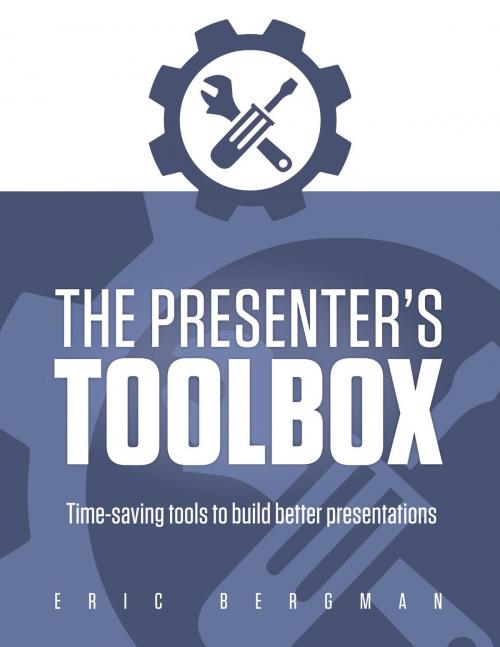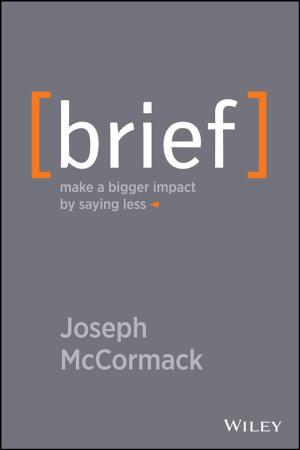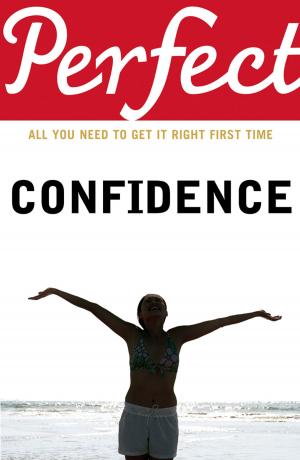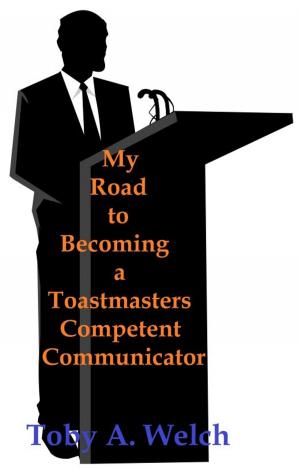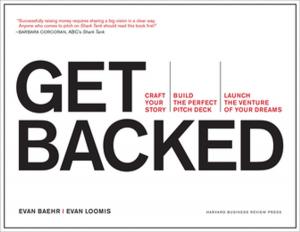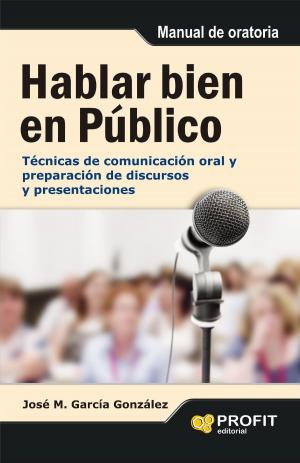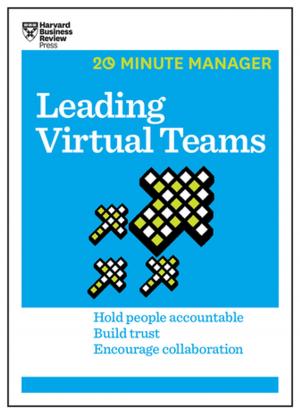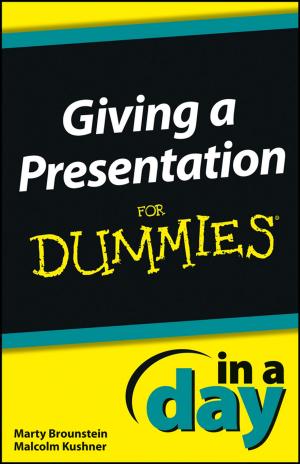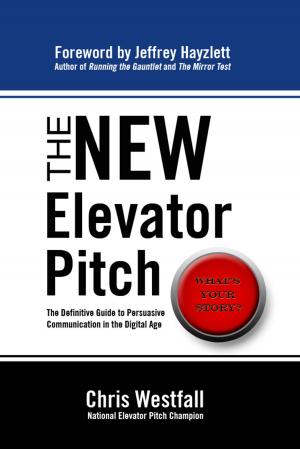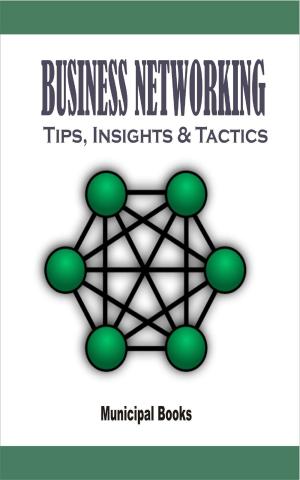The Presenter's Toolbox
Time-saving tools to build better presentations
Business & Finance, Business Reference, Business Communication| Author: | Eric Bergman | ISBN: | 9780987968982 |
| Publisher: | Petticoat Creek Press, Inc. | Publication: | February 4, 2016 |
| Imprint: | Petticoat Creek Press, Inc. | Language: | English |
| Author: | Eric Bergman |
| ISBN: | 9780987968982 |
| Publisher: | Petticoat Creek Press, Inc. |
| Publication: | February 4, 2016 |
| Imprint: | Petticoat Creek Press, Inc. |
| Language: | English |
This toolbox provides a series of models to help you develop clear, concise content for virtually any presentation challenge you'll face.
It will save you time. It will improve your effectiveness. And it is constructed on the assumption that the best approach to building any presentation is to develop slides last, not first, in the content development process.
Most people don’t remember the evolution of visual aids, but PowerPoint was created in 1987 to mimic the horizontal format of 35-mm slides. At the time, 35-mm slides cost anywhere from thirty-five to seventy-five dollars each to produce—i.e. to get from designer to audience.
They were called “speaker support slides” because that’s what they did. They supported the speaker.
Slideware programs like PowerPoint, Cricket Presents, Keynote, Prezi, SlideRocket, Haiku Deck and Google Slides were never created as content development tools. When PowerPoint was conceived, people always finished their content before a single slide was developed.
Yet most people today would never think of preparing a presentation without spending significant time (and probably too much time) at a slideware program.
When slideware is used to develop content, the finished product is often too much information and too many slides. The speaker now supports the slides, instead of the other way around.
The result? The next time you’re at a presentation, look around. Is the audience engaged and leaning in to listen? Or are they disengaged and tuning out to text?
The Presenter’s Toolbox offers an alternative to developing compelling, effective presentations. With it, you now have a choice.
The tools here will help you shape your strategy and develop clear, compelling content. You’ll shift your resources—your time—from spending hours putting slides together to focusing on audience needs and strengthening your strategic focus. And, because you’ll probably use fewer slides during your presentations, you’ll increase the chances of achieving your personal, professional and/or business objectives.
The tools here will help you focus on creating a win for both you and your audience. This is the foundation on which communication excellence is consistently constructed.
And once you become comfortable using the tools in this box, you'll wonder why you ever developed a presentation any other way.
This toolbox provides a series of models to help you develop clear, concise content for virtually any presentation challenge you'll face.
It will save you time. It will improve your effectiveness. And it is constructed on the assumption that the best approach to building any presentation is to develop slides last, not first, in the content development process.
Most people don’t remember the evolution of visual aids, but PowerPoint was created in 1987 to mimic the horizontal format of 35-mm slides. At the time, 35-mm slides cost anywhere from thirty-five to seventy-five dollars each to produce—i.e. to get from designer to audience.
They were called “speaker support slides” because that’s what they did. They supported the speaker.
Slideware programs like PowerPoint, Cricket Presents, Keynote, Prezi, SlideRocket, Haiku Deck and Google Slides were never created as content development tools. When PowerPoint was conceived, people always finished their content before a single slide was developed.
Yet most people today would never think of preparing a presentation without spending significant time (and probably too much time) at a slideware program.
When slideware is used to develop content, the finished product is often too much information and too many slides. The speaker now supports the slides, instead of the other way around.
The result? The next time you’re at a presentation, look around. Is the audience engaged and leaning in to listen? Or are they disengaged and tuning out to text?
The Presenter’s Toolbox offers an alternative to developing compelling, effective presentations. With it, you now have a choice.
The tools here will help you shape your strategy and develop clear, compelling content. You’ll shift your resources—your time—from spending hours putting slides together to focusing on audience needs and strengthening your strategic focus. And, because you’ll probably use fewer slides during your presentations, you’ll increase the chances of achieving your personal, professional and/or business objectives.
The tools here will help you focus on creating a win for both you and your audience. This is the foundation on which communication excellence is consistently constructed.
And once you become comfortable using the tools in this box, you'll wonder why you ever developed a presentation any other way.
